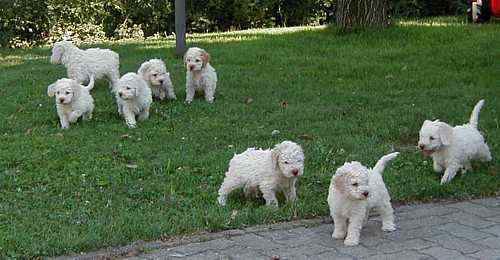Oregon has more than white truffles. The Portland Times has a very interesting piece on Oregon Black truffles, praising them highly:
"It’s like a treasure hunt,” says Jim Wells, a director at MycoLogical Natural Products in Eugene. Mycology is the study of fungi, and this company specializes in wild mushrooms, including truffles, picked from the surrounding forests.Wells is a proponent of Oregon black truffles, which he calls “the premier truffle on the planet.” They’re fruity and versatile, he says, with a subtle flavor that changes from day to day.
Like many fans, Wells thinks that Oregon truffles are under-appreciated. He says people often don’t realize how good the local product is because they taste truffles that have been mishandled. Both black and white varieties are extremely fragile, and a few days can make the difference between superb and dud. European truffles have the advantage of a longer shelf life."
I suspect that describing the Oregon black as the "premier truffle on the planet" is either good salesmanship or betrays a sad lack of knowledge of other black truffles, but the Oregon white is certainly worth attention. Charles Lefevre, in a recent email (where he thanks me for the "tongue in cheek" comment below), tells me of a trial he recently conducted between tuber magnatum and good specimens of tuber gibbosum:
The season for the Oregon truffles has been outstanding this year. The truffles have been large, plentiful and very aromatic. I think the power of the Oregon truffles is among the many well-kept secrets in the truffle world. I did an informal taste test comparing the Oregon white truffle with the Italian white truffle at a holiday party in December. I had a local chef prepare gnocchi in a cream sauce and shaved Oregon white over one half and Italian white over the other. [...] And the results...every single person there who I got around to interviewing felt that the Oregon white was both stronger and better. What condition, you correctly ask, were the different truffles in? The Oregon whites where at their best, selected from among several hundred at the local truffle purveyor's shop. The Italian whites were at least a week old and fading. It wasn't a fair comparison. However, I paid $1800.00 per pound for the Italian whites (the lowest price I could find) compared with about $100.00 per pound for the Oregon whites. The result of this experiment in my mind is not that the Oregon whites are better truffles than the Italian whites, but they are perhaps substantially better than their price and reputation would suggest.
Given that Italian whites are my favourite truffles, and I've never tasted the Oregon kind, whether black or white, I think that's a very fair conclusion. On the other hand, I may need to stump up for an airfare to Oregon in the truffle season.
PS: There's more about both Oregon truffles (and Charles) in a recent issue of the Audubon Society's magazine. [Link]

.jpg)


